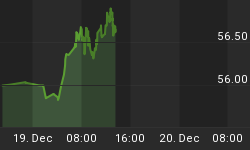In the natural resource and precious metals sectors there are literally thousands of companies available from which to choose to include in one's portfolio. There are a lot of great companies and some, well, questionable choices. Screening out favorites might mean subscribing to several investment services and listening to the views of professionals. Then you must decide on how many of these companies in which to actually purchase shares.
All investors whether novice or professionals need to consider the size of their portfolios. What is big and what is small will depend on many factors.This is going to sound so simple but it is essential to the discussion as to whether 10, 20, 50 or 100 positions is right for you.
Factors to be considered:
1. The amount of monies you have to invest
This is one of the first questions to ask, 'how much money will you be investing in the natural resource sector'? Whether you have $5,000, $10,000, $100,000 or a million makes a huge difference, in my opinion.
Diversification - investors must not put all of their eggs in one basket but yet you do not want to spread your money so thin by buying too many positions. One analyst suggests a portfolio of 10 stocks, while another recommends investing no more than 5% in any one position.
As a rule of thumb, I would suggest the following guidelines:
Amount of Money To Be Invested | Number of Positions | |
$5,000 | 4 | |
$10,000 | 4 - 6 | |
$100,000 | 10 - 20 | |
$1,000,000 | 20 - 50 |
The objective is to have enough money in each position so when we have a great up move that we will be greatly rewarded, but at the same time, in the event of negative news we are not over committed to any one position. A delicate balance, if you will, of your investment dollars with the number of positions you own.
2. Your time available to research and stay abreast of your investments
How much time do you devote to your investments? This is another significant issue in the size of your portfolio. If you only have a few hours a week or less, you must only carry a few positions as you will not have sufficient time to follow the price movements and news with a large portfolio.
If you have 6 to 8 hours a week or more to spend in following your portfolio then this would argue for you to have a larger portfolio.
3. Your skills of managing these investments
We all have different skills in life; some of us pay close attention to details while others do not. It is important for you to know yourself and what you are good at. If you are not a detail person then perhaps you would be more comfortable with a smaller portfolio.
I have several friends that when I ask, "do you still own xyz gold"? Their immediate reply is "I don't know." I get so frustrated. How in the world can you expect to make money and be a successful investor if you don't even know what you own as well as what you paid for the shares or warrants?
You must build a portfolio in any one of the popular online charting services which will allow you to keep up with all of your positions, prices, news, etc and this must be done using the Canadian symbols, not the U.S. symbols on these junior mining shares and/or warrants.
Amazingly, this will allow you to see within minutes each day the prices and stay abreast of all of the news stories on your companies and greatly relieve you of many hours of time. Also, you now know exactly what you own and keep this current by verifying your current holdings with your brokerage firm. If you want to follow additional companies that you don't currently own, great, but do so in a 'watch list', to be kept separate from your actual holdings.
Using these steps above will allow you to maintain a larger portfolio with ease.
Personally, I have about 90 different positions in the natural resource and mining sector in the common shares and long-term warrants on companies which I strongly believe will perform exceptionally well in the coming 18 to 24 months. I don't recommend this size of a portfolio to others but it works for me and I am very comfortable with my positions.
In the final analysis only you can decide what the correct size portfolio is for you taking into account all of the factors outlined above.
If you would like to know more about warrants, we encourage you to visit our website for an in-depth discussion of warrants, many examples, how to trade warrants and much more.
For those readers unfamiliar with our services:
- PreciousMetalsWarrants.com provides an online database for all warrants trading on the natural resource companies in the United States and Canada.
- InsidersInsights.com tracks the buying and selling of corporate insiders with a focus on the junior mining and natural resource sectors. Buy and Sell Alerts are issued as deemed relevant based upon our analysis.
We encourage all readers to sign up for our free weekly email.















